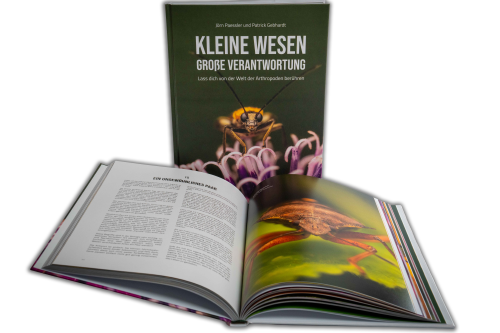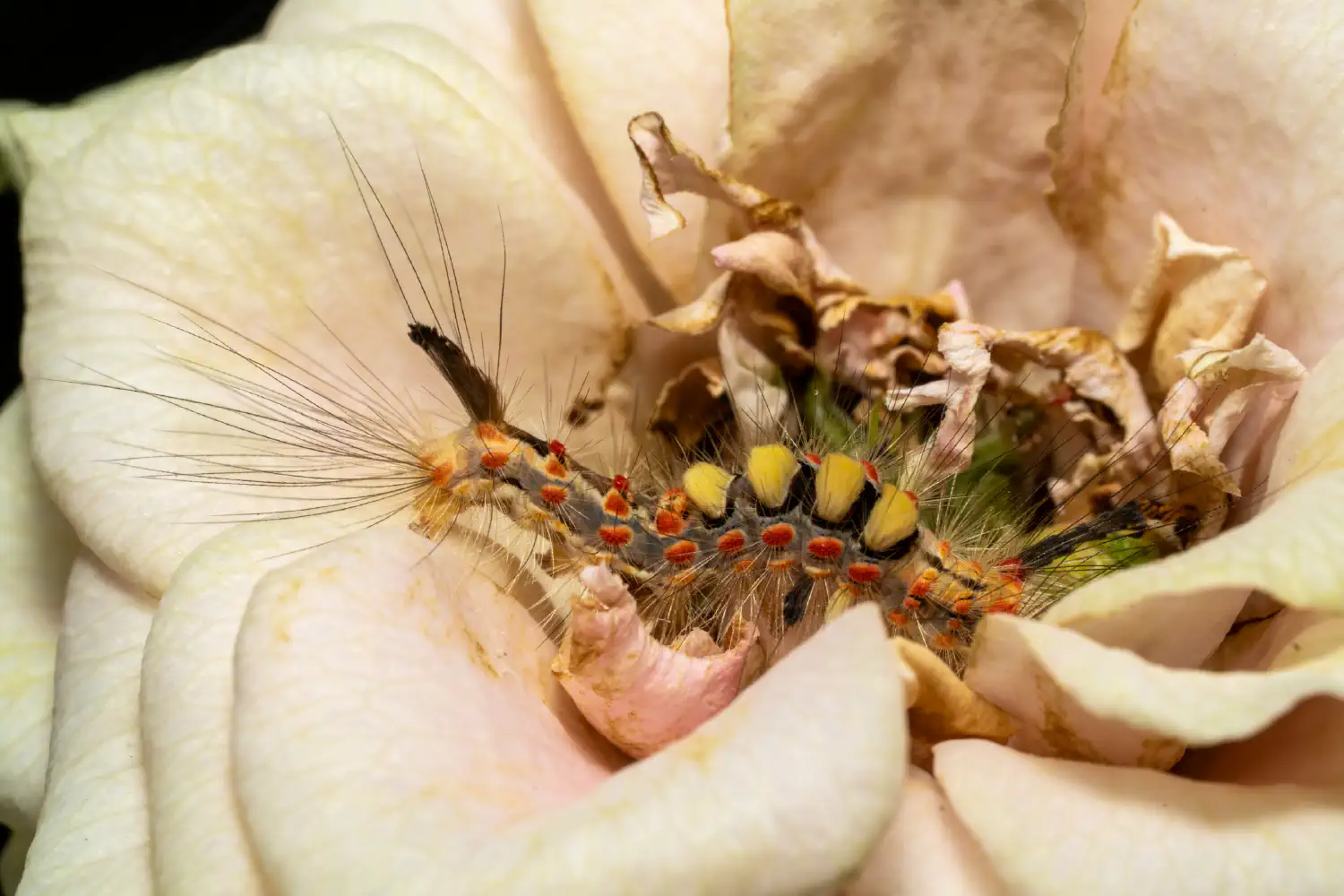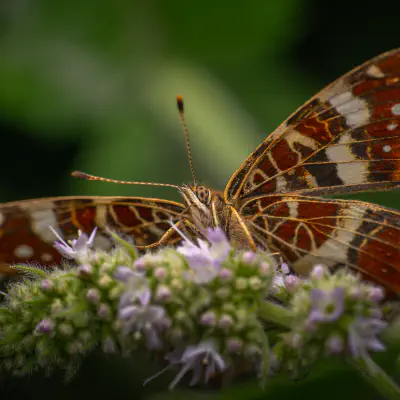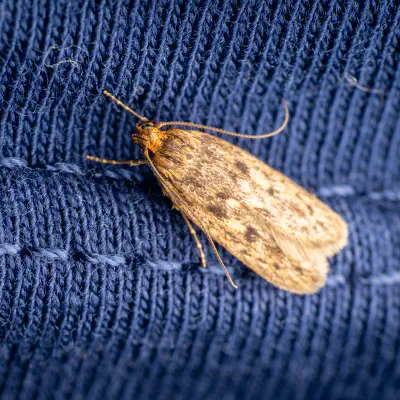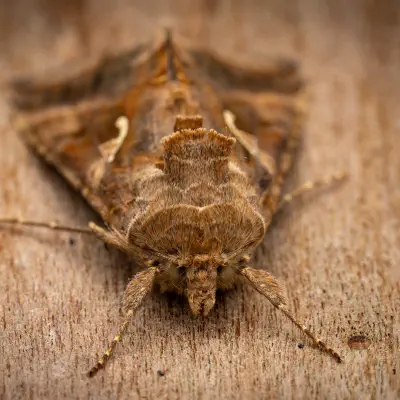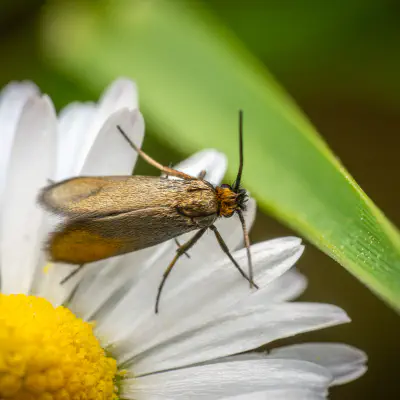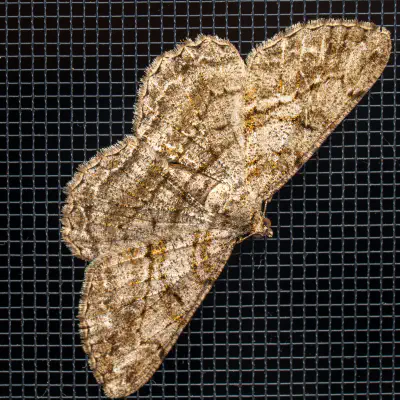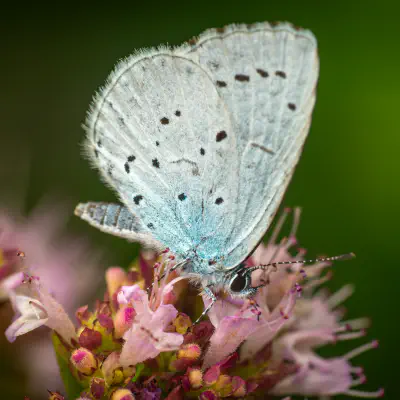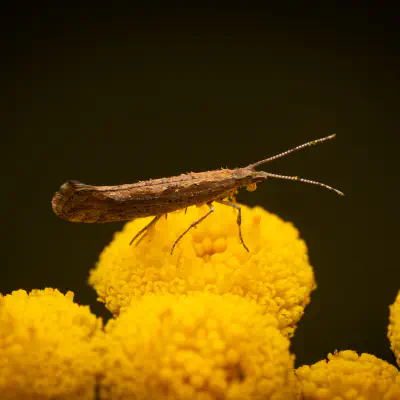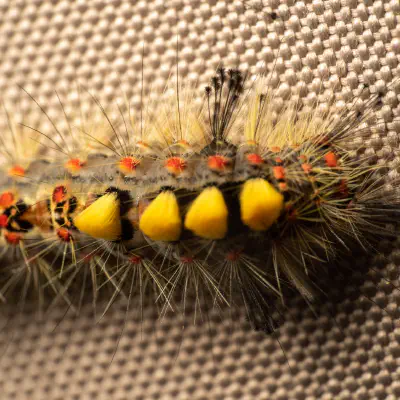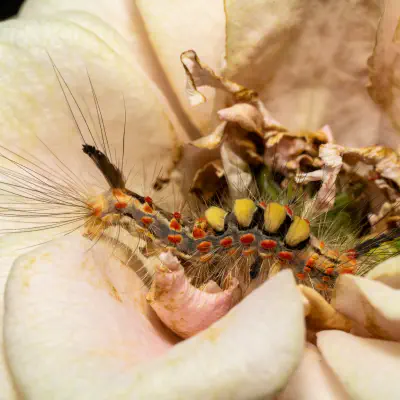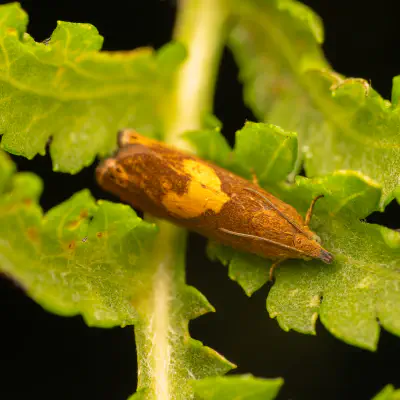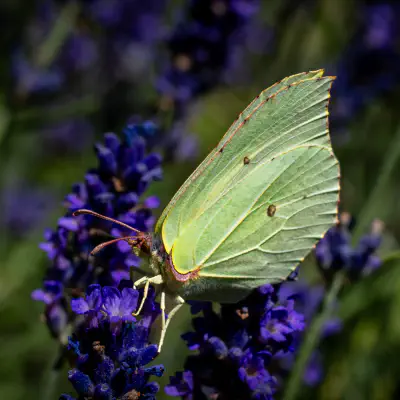Butterflies and Moths Lat. “Lepidoptera“
Lepidoptera (/ˌlɛpɪˈdɒptərə/ lep-i-DOP-tər-ə) is an order of insects that includes butterflies and moths (both are called lepidopterans). About 180,000 species of the Lepidoptera are described, in 126 families and 46 superfamilies, 10% of the total described species of living organisms. It is one of the most widespread and widely recognizable insect orders in the world. The Lepidoptera show many variations of the basic body structure that have evolved to gain advantages in lifestyle…
Hierarchy
Etymology
The term Lepidoptera was used in 1746 by Carl Linnaeus in his Fauna Svecica. The word is derived from Greek λεπίς lepís, gen. λεπίδος lepídos (“scale”) and πτερόν (“wing”). Sometimes, the term Rhopalocera is used for the clade of all butterfly species, derived from the Ancient Greek ῥόπαλον (rhopalon) and κέρας (keras) meaning “club” and “horn”, respectively, coming from the shape of the antennae of butterflies. The origins of the common names “butterfly” and “moth” are varied and often obscure. The English word butterfly is from Old English buttorfleoge, with many variations in spelling. Other than that, the origin is unknown, although it could be derived from the pale yellow color of many species’ wings suggesting the color of butter. The species of Heterocera are commonly called moths. The origins of the English word moth are clearer, deriving from Old English moððe (cf. Northumbrian dialect mohðe) from Common Germanic (compare Old Norse motti, Dutch mot and German Motte all meaning “moth”). Perhaps its origins are related to Old English maða meaning “maggot” or from the root of “midge”, which until the 16th century was used mostly to indicate the larva, usually in reference to devouring clothes. The etymological origins of the word “caterpillar”, the larval form of butterflies and moths, are from the early 16th century, from Middle English catirpel, catirpeller, probably an alteration of Old North French catepelose (from Latin cattus, “cat” + pilosus, “hairy”).
Distribution and diversity
The Lepidoptera are among the most successful groups of insects. They are found on all continents, except Antarctica, and inhabit all terrestrial habitats ranging from desert to rainforest, from lowland grasslands to mountain plateaus, but almost always associated with higher plants, especially angiosperms (flowering plants). Among the most northern dwelling species of butterflies and moths is the Arctic Apollo (Parnassius arcticus), which is found in the Arctic Circle in northeastern Yakutia, at an altitude of 1,500 metres (4,900 ft) above sea level. In the Himalayas, various Apollo species such as Parnassius epaphus have been recorded to occur up to an altitude of 6,000 metres (20,000 ft) above sea level. Some lepidopteran species exhibit symbiotic, phoretic, or parasitic lifestyles, inhabiting the bodies of organisms rather than the environment. Coprophagous pyralid moth species, called sloth moths, such as Bradipodicola hahneli and Cryptoses choloepi, are unusual in that they are exclusively found inhabiting the fur of sloths, mammals found in Central and South America. Two species of Tinea moths have been recorded as feeding on horny tissue and have been bred from the horns of cattle. The larva of Zenodochium coccivorella is an internal parasite of the coccid Kermes species. Many species have been recorded as breeding in natural materials or refuse such as owl pellets, bat caves, honeycombs or diseased fruit. As of 2007, there were roughly 174,250 lepidopteran species described, with butterflies and skippers estimated to comprise around 17,950, and moths making up the rest. The vast majority of Lepidoptera are to be found in the tropics, but substantial diversity exists on most continents. North America has over 700 species of butterflies and over 11,000 species of moths, while about 400 species of butterflies and 14,000 species of moths are reported from Australia. The diversity of Lepidoptera in each faunal region has been estimated by John Heppner in 1991 based partly on actual counts from the literature, partly on the card indices in the Natural History Museum (London) and the National Museum of Natural History (Washington), and partly on estimates:
External morphology
Lepidoptera are morphologically distinguished from other orders principally by the presence of scales on the external parts of the body and appendages, especially the wings. Butterflies and moths vary in size from microlepidoptera only a few millimeters long, to conspicuous animals with a wingspan greater than 25 centimetres (9.8 in), such as the Queen Alexandra’s birdwing and Atlas moth. Lepidopterans undergo a four-stage life cycle: egg; larva or caterpillar; pupa or chrysalis; and imago (plural: imagines) / adult and show many variations of the basic body structure, which give these animals advantages for diverse lifestyles and environments.
Polymorphism
Polymorphism is the appearance of forms or “morphs”, which differ in color and number of attributes within a single species. In Lepidoptera, polymorphism can be seen not only between individuals in a population, but also between the sexes as sexual dimorphism, between geographically separated populations in geographical polymorphism, and between generations flying at different seasons of the year (seasonal polymorphism or polyphenism). In some species, the polymorphism is limited to one sex, typically the female. This often includes the phenomenon of mimicry when mimetic morphs fly alongside nonmimetic morphs in a population of a particular species. Polymorphism occurs both at specific level with heritable variation in the overall morphological adaptations of individuals, as well as in certain specific morphological or physiological traits within a species. Environmental polymorphism, in which traits are not inherited, is often termed as polyphenism, which in Lepidoptera is commonly seen in the form of seasonal morphs, especially in the butterfly families of Nymphalidae and Pieridae. An Old World pierid butterfly, the common grass yellow (Eurema hecabe) has a darker summer adult morph, triggered by a long day exceeding 13 hours in duration, while the shorter diurnal period of 12 hours or less induces a paler morph in the postmonsoon period. Polyphenism also occurs in caterpillars, an example being the peppered moth, Biston betularia. Geographical isolation causes a divergence of a species into different morphs. A good example is the Indian white admiral Limenitis procris, which has five forms, each geographically separated from the other by large mountain ranges. An even more dramatic showcase of geographical polymorphism is the Apollo butterfly (Parnassius apollo). Because the Apollos live in small local populations, thus having no contact with each other, coupled with their strong stenotopic nature and weak migration ability, interbreeding between populations of one species practically does not occur; by this, they form over 600 different morphs, with the size of spots on the wings of which varies greatly.
Sexual dimorphism is the occurrence of differences between males and females in a species. In Lepidoptera, it is widespread and almost completely set by genetic determination. Sexual dimorphism is present in all families of the Papilionoidea and more prominent in the Lycaenidae, Pieridae, and certain taxa of the Nymphalidae. Apart from color variation, which may differ from slight to completely different color-pattern combinations, secondary sexual characteristics may also be present. Different genotypes maintained by natural selection may also be expressed at the same time. Polymorphic and/or mimetic females occur in the case of some taxa in the Papilionidae primarily to obtain a level of protection not available to the male of their species. The most distinct case of sexual dimorphism is that of adult females of many Psychidae species which have only vestigial wings, legs, and mouthparts as compared to the adult males that are strong fliers with well-developed wings and feathery antennae.
Reproduction and development
Species of Lepidoptera undergo holometabolism or “complete metamorphosis”. Their life cycle normally consists of an egg, a larva, a pupa, and an imago or adult. The larvae are commonly called caterpillars, and the pupae of moths encapsulated in silk are called cocoons, while the uncovered pupae of butterflies are called chrysalides.
Ecology
Moths and butterflies are important in the natural ecosystem. They are integral participants in the food chain; having co-evolved with flowering plants and predators, lepidopteran species have formed a network of trophic relationships between autotrophs and heterotrophs, which are included in the stages of Lepidoptera larvae, pupae, and adults. Larvae and pupae are links in the diets of birds and parasitic entomophagous insects. The adults are included in food webs in a much broader range of consumers (including birds, small mammals, reptiles, etc.).
See also
Lepidoptera in the 10th edition of Systema Naturae McGuire Center for Lepidoptera and Biodiversity, University of Florida Societas Europaea Lepidopterologica
Further reading
Kristensen, N. P. (ed.) 1999. Lepidoptera, Moths and Butterflies. Volume 1: Evolution, Systematics, and Biogeography. Handbuch der Zoologie. Eine Naturgeschichte der Stämme des Tierreiches / Handbook of Zoology. A Natural History of the phyla of the Animal Kingdom. Band / Volume IV Arthropoda: Insecta Teilband / Part 35: 491 pp. Walter de Gruyter, Berlin, New York. Nemos, F. (c. 1895). Europas bekannteste Schmetterlinge. Beschreibung der wichtigsten Arten und Anleitung zur Kenntnis und zum Sammeln der Schmetterlinge und Raupen [Europe’s best known butterflies. Description of the most important species and instructions for recognising and collecting butterflies and caterpillars] (PDF). Berlin: Oestergaard Verlag. Archived from the original (PDF) on 24 July 2011. Nye, I. W. B. & Fletcher, D. S. 1991. Generic Names of Moths of the World. Volume 6: xxix + 368 pp. Trustees of the British Museum (Natural History), London. O’Toole, Christopher. 2002. Firefly Encyclopedia of Insects and Spiders. ISBN 1-55297-612-2. Bibliography Lamas, Gerardo (1990). “An Annotated List of Lepidopterological Journals” (PDF). The Journal of Research on the Lepidoptera. 29 (1–2): 92–104. doi:10.5962/p.266621. S2CID 108756448. Archived from the original (PDF) on 27 August 2016. Retrieved 22 November 2012.
External links
Natural History Museum archived database of host plants Historic Moth illustrations Lepidoptera at Insects (Insecta) of the World “Lepidoptera”. Integrated Taxonomic Information System. Caught Between the Pages: Treasures from the Franclemont Collection Online virtual exhibit featuring a selection of historic entomological writings and images from the Comstock Library of Entomology at Cornell University Regional sites British Butterflies and Moths Butterflies of Bulgaria Archived 5 April 2008 at the Wayback Machine Butterflies of Canada Photography of European Butterflies and Moths Lepidoptera of French Antilles Butterflies of India A Check List of Butterflies in Indo-China Moths of Jamaica Japmoth Japanese moths. Access images via the numbers on the left. Butterflies and Moths in the Netherlands Butterflies and Moths of Northern Ireland Archived 1 August 2015 at the Wayback Machine Butterflies of Asian Russia Archived 31 August 2007 at the Wayback Machine Photos of Larvae and Pupae butterflies and moths. Spain Archived 28 July 2013 at the Wayback Machine Butterflies of Asturias – Spain Swedish Moths and Butterflies Lepidoptera (English) Butterflies of Turkey
Ancestry Graph
Further Information
„Butterflies and Moths“ on wikipedia.org
„Butterflies and Moths“ on iNaturalist.org
Copyright

This article uses material from the Wikipedia article Lepidoptera the free encyclopedia Wikipedia which is released under Creative Commons Attribution-ShareAlike 4.0 International License). On Wikipedia a list of authors is available.

Little beings in print
Order our calendars and books today!
Compiled with love. Printed sustainably. Experience our little beings even more vividly in print. All our publications are available for a small donation.
